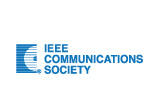IEEE ICC 2012 Tutorials Program
Monday, June 11, Afternoon
T04: 60 GHz Wireless Communication Monday, June 11, Afternoon
- Speakers:
- Theodore S. Rappaport, New York University, USA
Robert W. Heath Jr., The University of Texas at Austin, USA
Robert C. Daniels, Kuma Signals, LLC, USA - Abstract:
- The millimeter-wave band, especially spectrum in the LMDS (28-38 GHz) and unlicensed 60 GHz bands, is at the spectral frontier of high bandwidth commercial wireless communication systems. Spectrum at 60 GHz is plentiful (up to 7 GHz unlicensed spectrum is available in many countries). Several emerging wireless standards will exploit 60 GHz to provide high data rate media streaming and rapid data transfer. Designing 60 GHz wireless systems offers different challenges than millimeter wave communication systems due to differences in the channel, circuits, antennas, algorithms, and protocols. This tutorial will provide a comprehensive introduction to 60 GHz wireless communication systems. It will discuss the entire system including propagation, RF/Analog circuits, the physical layer, and the link layer. It will discuss 60 GHz in several commercial standards including IEEE 802.15.3c and IEEE 802.11ad.
- Speaker Bios:
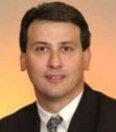
Theodore S. Rappaport received his B.S., M.S. and Ph.D. degrees from Purdue University. He is the David Lee/Ernst Weber Chair of Electrical Engineering at New York University (NYU) and also serves on the faculty of NYU’s Courant Institute and the Medical School. He founded two renowned academic wireless research centers – Virginia Tech’s wireless communications program in 1990, and the Wireless Networking and Communications Group (WNCG) at The University of Texas in 2002. Prof. Rappaport is a pioneering researcher in the fields of radio wave propagation, wireless communication system design, and broadband wireless communications circuits and systems at millimeter wave frequencies. He has received many awards including the Frederick Emmons Terman Award from the ASEE, the Stuart F. Meyer Award from the IEEE Vehicular Technology Society, the Sir Monty Finniston Medal from the IET, and the IEEE Communications Society Stephen O. Rice Prize Paper Award. He has also founded and sold two companies to publicly traded firms, testified before the US Congress, served as an international consultant for the ITU, consulted for over 30 major telecommunications firms, and continues to work on many national committees pertaining to communications research and technology policy. He has served or is serving on the Board of Governors of IEEE COMSOC and IEEE VTS, is an IEEE Fellow, and is a registered Professional Engineer in Texas and Virginia.

Robert W. Heath Jr. received the B.S. and M.S. degrees from the University of Virginia, Charlottesville, VA, in 1996 and 1997 respectively, and the Ph.D. from Stanford University, Stanford, CA, in 2002, all in electrical engineering. He is currently an Associate Professor at The University of Texas at Austin. Dr. Heath has been an Editor for the IEEE Transactions on Communication and an Associate Editor for the IEEE Transactions on Vehicular Technology. He is the Chair of the IEEE COMSOC Communication Theory Technical Committee in COMSOC. He has held leadership roles in several IEEE conferences and workshops. He is the recipient of the EURASIP Journal on Wireless Communications and Network best paper award. He has given tutorials in the past at VTC, ICC, and ICASSP. Prof. Heath is the recipient of the David and Doris Lybarger Endowed Faculty Fellowship in Engineering, is a registered Professional Engineer in Texas, and is an IEEE Fellow.

Robert C. Daniels received B.S. degrees in Mathematics and Electrical Engineering from The Pennsylvania State University in 2004. He received the M.S.E. degree and the Ph.D. degree in Electrical and Computer Engineering from the University of Texas at Austin in 2006 and 2011, respectively. During his time at UT Austin we was awarded multiple fellowships and won multiple awards, including the WNCG student leadership award (2009) and the ACM Mobicom WINTECH best wireless demo award (2009). He is a co-founder and Executive Vice President of Engineering of Kuma Signals, LLC in Austin, TX where he serves as Principal Investigator on Department of Defense contracts and also manages the C3Z project, which will provide 60 GHz wireless links specifically tailored to defense and medical applications.
T05: Content Streaming for Mobile Environments Monday, June 11, Afternoon
- Speakers:
- Mahbub Hassan, University of New South Wales, Australia
Salil Kanhere, University of New South Wales, Australia - Abstract:
- With the proliferation of smart mobile devices, a growing number of users are now accessing streaming applications while travelling in cars, buses and trains. Market forecasts suggest that by year 2015, more than 50% of the total mobile traffic will come from streaming applications. Unfortunately, under high-speed mobility and growing network heterogeneity, mobile devices are facing increased uncertainty as well as more frequent and more substantial fluctuations in available network resources. Not only it has become more difficult to predict network bandwidth, but simply adapting multimedia quality to the predicted bandwidth is also no longer adequate as frequent and drastic quality variations reduce user quality of experience. Optimization of streaming quality in mobile environments therefore has become a challenging problem, which is receiving renewed attention from both academic and industrial research. This tutorial will provide a comprehensive overview of the latest research in the broad area of mobile streaming. Topics that will be covered include, but not limited to, characterization of bandwidth variability under high-speed mobility, use of location-based bandwidth prediction in multimedia content adaptation, introduction to HTTP-based streaming, and overview of emerging standards for mobile streaming. The tutorial will conclude with open issues and future directions of research.
- Speaker Bios:

Mahbub Hassan is a Full Professor in the School of Computer Science and Engineering, the University of New South Wales, Sydney, Australia. He worked as Visiting Professor at Osaka University, Japan (2011), University of Nantes, France (2005) and National ICT Australia (2004). He is an Area Editor of Computer Communication journal (Elsevier) and has previously served as Guest Editor for IEEE Network and Associate Technical Editor for IEEE Communications Magazine. His broad research interests include high-speed packet switching networks, vehicular communication, and mobile Internet. He has co-authored three books, one US patent, and over 100 refereed articles in these areas. Professor Hassan has earned a PhD from Monash University, Australia, and an MSc from University of Victoria, Canada, both in Computer Science. More information about Professor Hassan is available from http://www.cse.unsw.edu.au/~mahbub.
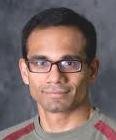
Salil Kanhere received his M.S. and Ph.D. degrees, both in Electrical Engineering from Drexel University, Philadelphia in 2001 and 2003, respectively. He is currently a Senior Lecturer at the School of Computer Science and Engineering at The University of New South Wales in Sydney, Australia. His research interests include mobile networks, vehicular communication, participatory sensing and sensor networks. He has published over 75 peer-reviewed articles on these research topics. He currently serves as the Area Editor for the ICST Journal on Ubiquitous Environments and the European Transactions on Telecommunications. He has also served on the organizing committee and program committee of a number of IEEE and ACM international conferences. He is a senior member of the IEEE and ACM.
T06: Radio Resource Management in Femtocell Network Monday, June 11, Afternoon
- Speakers:
- Ekram Hossain, University of Manitoba, Canada
Long Bao Le, University of Quebec, Canada - Abstract:
- The evolving femtocell networks are envisioned to provide improved capacity and coverage in next generation cellular wireless systems. Femtocell deployments pose many challenges among which radio resource management (i.e., interference management, admission control, load balancing) is the most significant one. The aim of this tutorial is to provide an extensive overview of the radio resource management problem in femtocell networks considering both CDMA (e.g., 3G) and OFDMA (e.g., LTE, WiMAX) femtocells, and the state-of-the-art research on this topic. After a brief overview of the femtocell networks, we outline the major challenges in successful deployment of femtocells in next generation cellular wireless systems. In particular, the challenges related to resource allocation, co-tier and cross-tier interference management and admission control, mobility and handoff management, auto-configuration, timing and synchronization, and security are discussed. Then we provide a comprehensive overview of the different state-of-the-art techniques for resource allocation and interference management in femtocell networks. In this context, the interference modeling approach based on the shot-noise theory is also discussed. We consider both CDMA and OFDMA femtocells and two different approaches for resource allocation and interference management in these systems are described. The requirements and challenges for admission control and load balancing in femtocell networks are then discussed, and an example method for joint admission control and load balancing is given.
- Speaker Bios:
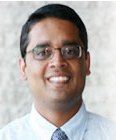
Ekram Hossain (http://www.ee.umanitoba.ca/~ekram) is currently a Full Professor in the Department of Electrical and Computer Engineering at University of Manitoba, Winnipeg, Canada. His current research interests include resource allocation and medium access control in wireless networks, cooperative and cognitive wireless systems, smart grid systems, and green radio communications. He has authored/edited several books in these areas. Currently he serves as the Editor-in-Chief for the IEEE Communications Surveys and Tutorials, an Editor for the IEEE Transactions on Mobile Computing, and the IEEE Wireless Communications. Previously he served as the “Area Editor” for the IEEE Transactions on Wireless Communications in the area of “Resource Management and Multiple Access”. Dr. Hossain presented tutorials on different emerging wireless communications technologies in IEEE conferences including IEEE Globecom'11, IEEE PIMRC'11, IEEE ICC'10, IEEE ICC'09, IEEE VTC'08-Fall, IEEE Globecom'07, and IEEE WCNC'07. Dr. Hossain is a registered Professional Engineer (P.Eng.) in the province of Manitoba, Canada.
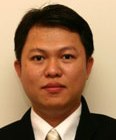
Long Bao Le (http://necphy-lab.com/) is currently with the National Institute of Scientific Research – Energy, Materials, and Telecommunications (INRS-EMT), University of Quebec, Montreal, QC, Canada, where he is an Assistant Professor. He obtained his Ph.D. from the University of Manitoba, Canada, in 2007. From 2008-2010, he was Post-Doctoral Research Associate at the Massachusetts Institute of Technology (MIT), USA. Dr. Le’s research has focused on cross-layer optimization issues for physical and higher-layer protocols in wireless networks. His current research interests include cognitive radio, cooperative diversity, network optimization and control, adaptive resource allocation and protocol engineering for wireless networks. Dr. Le serves as an editor for the IEEE Wireless Communications Letters.



